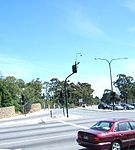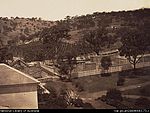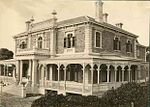Wheal Watkins mine
History of AdelaideLead mines in South AustraliaSilver mines in South AustraliaSouth Australian Heritage RegisterSouth Australian places listed on the defunct Register of the National Estate ... and 2 more
Surface mines in AustraliaUse Australian English from August 2015
Wheal Watkins mine is an historic lead and silver mine in Glen Osmond, South Australia. The mine first operated from 1844 until 1850, and again briefly in 1888 to 1889, and 1916. From 1986 onwards, the mine was accessible by guided tour, until a rockfall event prompted its closure in 2005.
Excerpt from the Wikipedia article Wheal Watkins mine (License: CC BY-SA 3.0, Authors).Wheal Watkins mine
Mount Osmond Fire Access Track, Adelaide
Geographical coordinates (GPS) Address Nearby Places Show on map
Geographical coordinates (GPS)
| Latitude | Longitude |
|---|---|
| N -34.961722 ° | E 138.655446 ° |
Address
Mount Osmond Fire Access Track
Mount Osmond Fire Access Track
5064 Adelaide (Mount Osmond)
South Australia, Australia
Open on Google Maps





